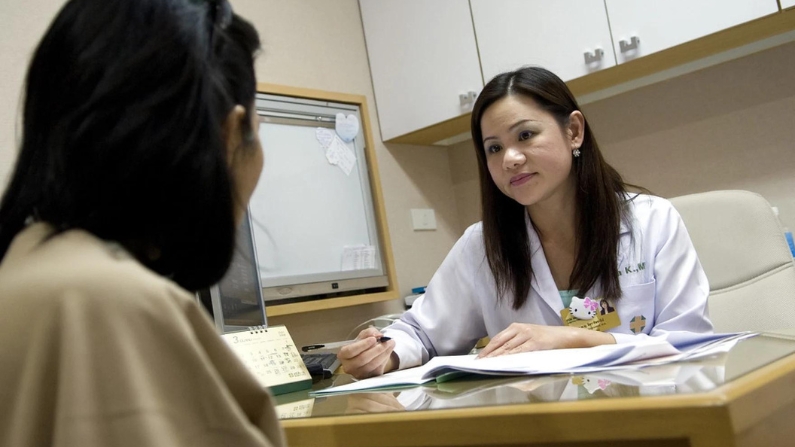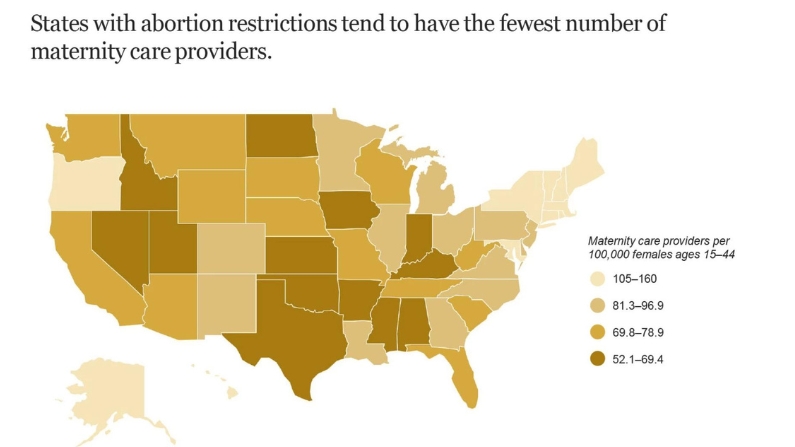Women in the Mountain West have some of the worst access to healthcare in the country.
A new scorecard says Wyoming, New Mexico, Arizona and Nevada all rank in the bottom 10 states nationwide when it comes to how their healthcare systems are working for women.
Some of these states ranked particularly poorly on insurance coverage, access and affordability, while others came up short in actual healthcare outcomes and quality.
“Where a woman lives matters,” said Senior Scientist David Radley, who works with healthcare research group The Commonwealth Fund, which put out the scorecard. “It matters in terms of her ability to access care, the quality of care she’s likely to get.”

A map showing the overall performance of states in women’s health and reproductive care. (The Commonwealth Fund)
Out of all states, Colorado (17th), Idaho (27th) and Utah (28th) were near the middle of the group. New Mexico is 41st and Wyoming 42nd. Arizona came in 44th and Nevada came in 48th.
To get into the specifics, Wyoming ranks dead last for the number of women getting routine checkups, and cervical and breast cancer screenings.
Three in 10 women in the Cowboy State don’t have a single person they think of as their health care provider. The national average is 23%. And Nevada, Arizona and New Mexico ranked even worse.
In Nevada, more than 50% of women hadn’t received a colonoscopy in the last two years – the highest number in the country. And Arizona and New Mexico are home to some of the highest rates of syphilis in the country.
Radley said a lot of this comes down to access to healthcare providers. Rural states often struggle to recruit doctors and nurses.
“We know that healthcare workforce issues are perpetually a problem in really rural places,” he said. “It’s really difficult to have an adequate number of providers of all specialties, not just maternity care.”
The data shows that the number of maternity care providers is particularly low in states with abortion bans. Idaho and Utah, which both have bans, also have some of the lowest numbers of maternity care providers in the region. That’s compounded by the state’s rural nature.

A chart showing how many women ages 18-44 went without care because of cost. (The Commonwealth Fund)
Radley added that women have more access in Colorado, where abortion is legal. The state is also training nurses and midwives to specifically work in rural areas.
Plus, he said states that rank high on the scorecard, like ones in the Northeast, are making health insurance accessible to as many people as possible.
The data shows that in states that haven’t expanded Medicaid, such as Wyoming, women of reproductive age are more likely to skip needed care because of cost.
In Wyoming, one in seven women are uninsured.
This story was produced by the Mountain West News Bureau, a collaboration between Wyoming Public Media, Nevada Public Radio, Boise State Public Radio in Idaho, KUNR in Nevada, KUNC in Colorado and KANW in New Mexico, with support from affiliate stations across the region. Funding for the Mountain West News Bureau is provided in part by the Corporation for Public Broadcasting.







